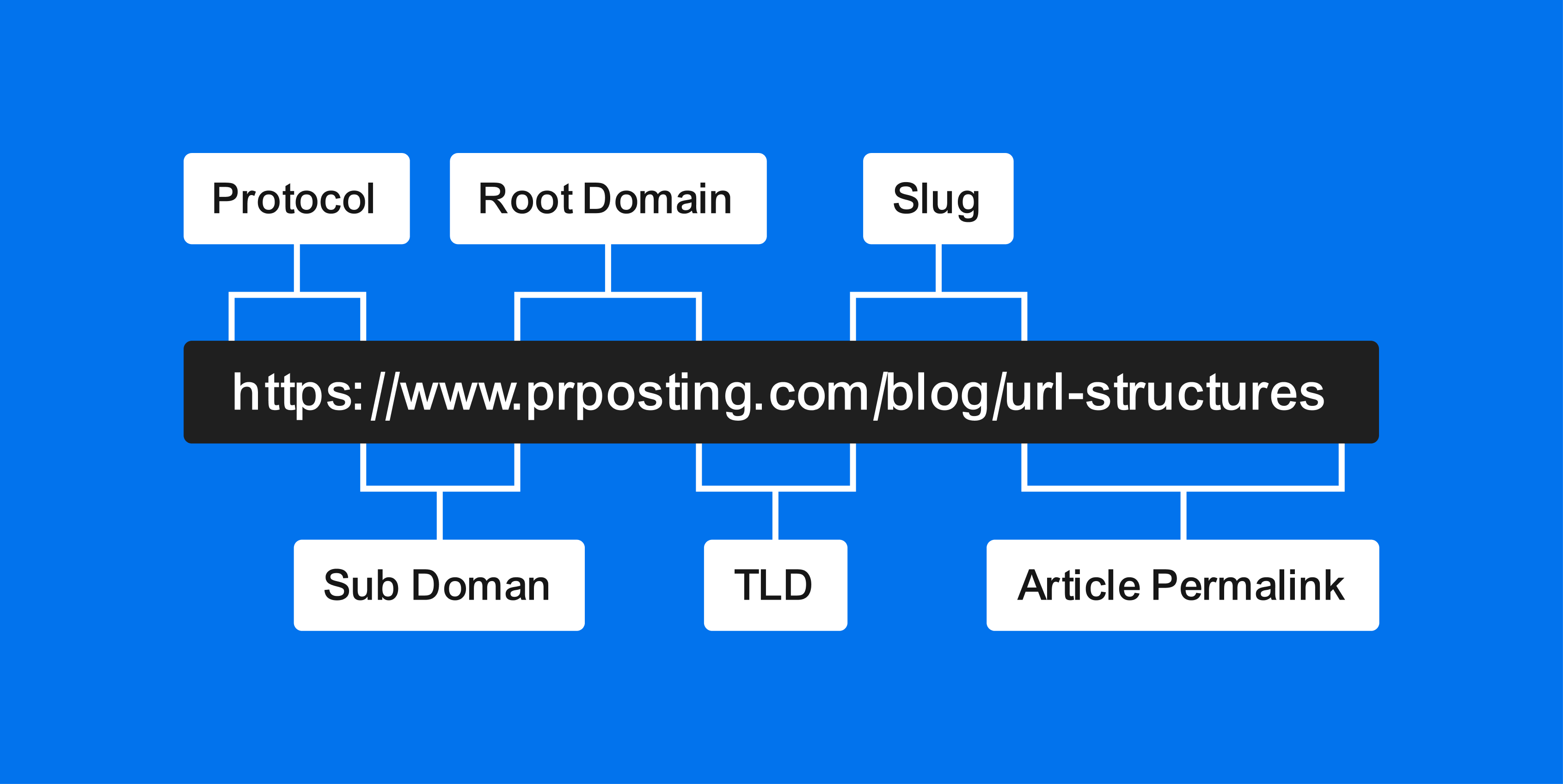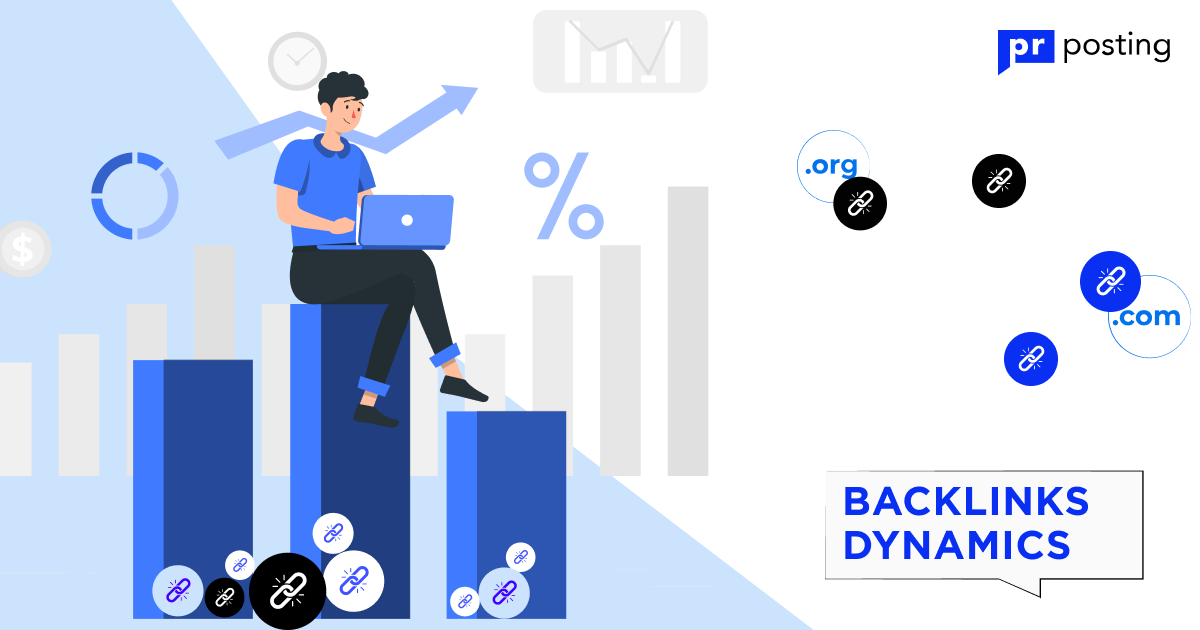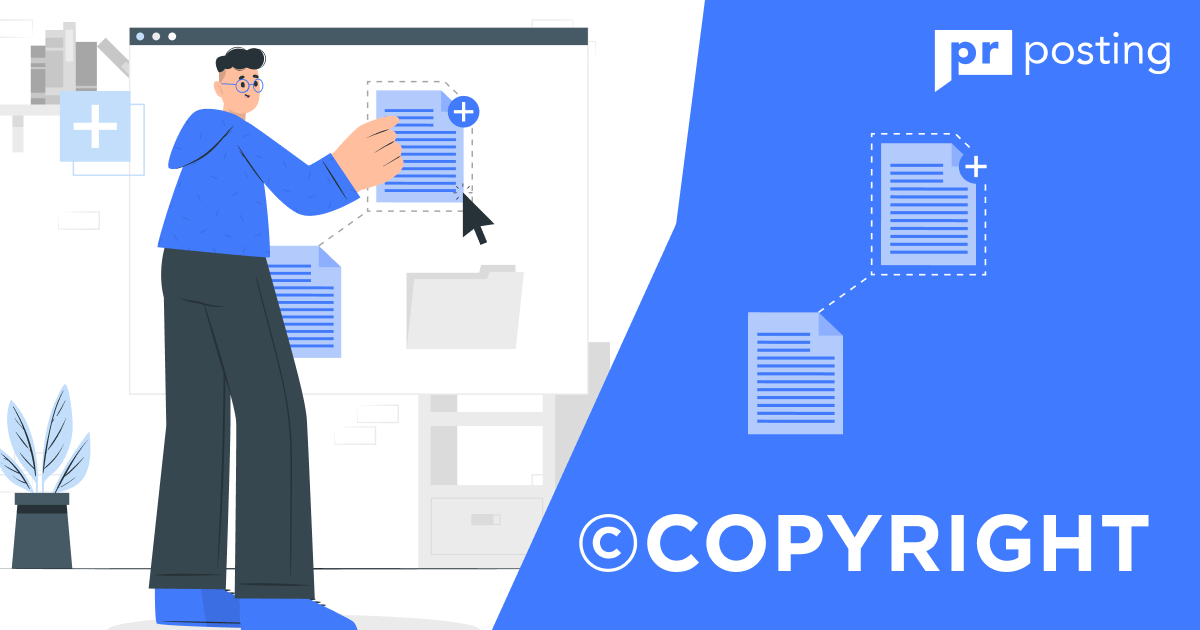SEO-friendly URL Structures

Understanding of a URL Structure
Multiple factors impact the effectiveness of a website’s ranking in search results. Search engine algorithms take into account the quality of external and internal optimization of a project.
The final position of a web page for relevant queries also depends on the approach to URL optimization. If the URL has no keywords and partially consists of a set of characters, the chances for success will be minimal.
1. What Is a URL?
URL stands for Uniform Resource Locator. This is the address of the web page that the user enters into the address bar of the browser. There are a few components of a URL, each having different characteristics.
If the website has no breadcrumb micro-markup, Google will display parts of a URL. At the time of making a decision to click on a website from the SERPs, users may take the URL into account. If it looks weird and doesn’t match the query, the user may go to another website, and the project will lose potential traffic. Therefore, you should make the URL look attractive.
2. What Are the Parts of a URL?
A URL consists of different components, each of which partially impacts the effectiveness of the page ranking in organic search results. If the webmaster does not pay attention to URL optimization, the project may lose part of the conversions.
After you buy a domain, you can change this part of the URL only through redirect, but you can easily reformat the other parameters. Therefore, at the time of deciding to launch a site, you must pay maximum attention to domain selection. Some beginner SEO specialists mistakenly believe that only the final URL of the page — the domain zone — affects the ranking, and the protocol and other components are irrelevant. This is wrong — each structural part of the URL contributes to the final result.

2.1. Protocol
A website’s protocol is related to the way data are transferred from the server hosting the project to the user’s browser. Each time the user enters a URL into the browser bar, a request is sent to the server, and, in response, the browser generates content on the screen based on the data obtained.
Today, a more secure HTTPS protocol is largely used rather than HTTP. For a few years now, Google has been recommending that webmasters switch their projects to HTTPS and install an SSL certificate.
It’s hard to argue for the use of HTTP in a URL structure in 2023. You can connect an SSL certificate in a few clicks. You don’t even have to spend money for that, because most web hosting providers provide it for free.
2.2. Subdomain
If a subdomain is used in the Uniform Resource Locator structure, the URL is expanded by one element. For example, in shop.apple.com, the ‘shop’ structure is a subdomain.
Search engines algorithms understand that the URL contains an online store where users can buy products. When visitors to Google see such a URL in search results, they clearly understand where they will get after a click.
For many years, SEO specialists have been arguing about whether it is better to use subdomains or directories. There is no definite answer to this question because each case is unique.
2.3. Domain name/root domain
The root domain is one of the main elements of a URL. It greatly affects the ranking of the page and the project as a whole in search results. When the ranking algorithms were just forming, it was possible to quickly get to the top with the keywords in the domain name. Now, it’s not so simple, but the domain is still essential.
Before you finally decide on the root domain for the project, you must conduct an in-depth analysis. If the name is not very good, it may affect the website’s operation in the future.
It is possible to change the domain name, but if the project has already gained good visibility in search results, it is risky. There are no guarantees that search engine algorithms will quickly change the data in SERPs and the website will retain the same visibility level.
2.4. TLD
Domain zone in the technical documentation is called the Top-Level Domain (TLD). For example, in the shop.apple.com URL, the last part is a TLD. When a user decides to visit a website, they analyze the domain zone.
SEO specialists believe that the domain zone affects the project’s ranking in organic search results. But over time, the value of this factor decreases. Google has regional preferences, but they do not greatly affect the final result.
2.5. Path
The path is the page address (slug) on the website. It indicates how the page can be found if all the other parts of a URL are known. It is believed that the slug has the greatest impact on the project’s ranking in organic results.
If you include key queries in the slug and remember about readability, you can get additional bonuses. Search engines will find keyword phrases, and users will see a concise URL.
Parts of a domain URL affect how it will rank in search results. If the webmaster does not pay attention to proper URL formatting, the chances of getting high positions will decrease.
At the start of website promotion, you should select an optimal domain zone and the domain itself. When you complete these tasks, you’ll have to format the URLs of specific pages and monitor their progress in organic SERPs.
3. Why Is URL Structure Important for SEO?
In the SEO niche, many myths prevent website owners from building an effective promotion strategy. For example, even in 2023, webmasters register domains with long-tail queries for five or more keywords. However, Google has long had a filter for over-optimization, which limits the visibility of suspicious domains in the organic search results. So, if you do not use security methods, you may waste your money.
But such things as the protocol scheme and SSL certificate settings strongly affect the evaluation of the project by both search engines and ordinary users. Therefore, you should make every effort to ensure that your project performs well in terms of this factor.
For example, if users see the mark «Suspicious website» in the browser, they are likely to close the tab. When there are 50% or more such visits, search engine algorithms will definitely notice this and respond.
Therefore, it is important to make sure that all parts of a website address are favorable for the project. To do this, just follow the basic rules of URL optimization and monitor the situation in the search results.
An example of the use of breadcrumb micro-markup
3.1. Links
The quality of internal linking affects the evaluation of each page by search engine algorithms. They pay attention to the approach to placing external links. If the text does not contain many suspicious links, it is a good signal.
Website owners who care about the reputation of their projects carefully select potential partners for link building. The structure of URL address also affects the decision to cooperate.
If the webmaster notices that the domain is spammed by keyword queries, and the final URL consists of a random set of characters, they are unlikely to want to build links.
3.2. PageRank
The quality of a URL’s structure affects the ranking. Search engines carefully analyze it and respond to changes. When each page is perfectly optimized, this affects the evaluation of search engine algorithms.
The core of Google’s ranking algorithms is the PageRank metric, which shows the authority of a page. Several years ago, the search engine closed public access to PR values, but company representatives have confirmed that PageRank is still used as one of the ranking factors.
Accordingly, project pages with the correct hypertext structure and SEO-friendly URLs have a better chance of receiving high PR scores. The higher the score, the greater the advantage a website has in the fight for the top positions in SERPs.
Remember that optimized URLs also affect the likelihood of clicking on links. And this indicator strongly influences PageRank. There is a connection between many SEO metrics, which can be seen with the help of analysis.
3.3. User experience
When users see a short URL in a search engine, which is enough to determine the relevance of the page to the query, the website is likely to get a targeted conversion.
The more clicks a page receives in organic search, the higher its reputation in the eyes of search engine algorithms. Therefore, designing the right structure of websire address for SEO should be on the priority list.
Let’s imagine that a user sees two URLs in search results:
- site.com/seo/how-to-build-seo-optimize-url
- site.com/seo/p=5535
The first URL gives the impression that there may be useful information on the page for the query. And in the second case, there are not enough useful data in the URL. But if the user knows the domain, they can even choose a page with that slug.
When search engines find new pages, the first thing they see is the URL. Only after analyzing the page do they form an impression about content quality and the project in general. Therefore, the first impression mustn’t be spoiled.
4. Best Tips for SEO URL Structure
An SEO-optimized URL structure helps a project get more points in the final ranking and increases the chances of getting top positions. If several applicants will have the same ranking, the result may depend on a specific factor.
Tips for improving URL structure remain unchanged for many years, but website owners don’t always follow all recommendations. Every single detail can affect the final result.
A trailing slash at the end of the URL does not affect anything, but if you choose a domain with a bad history, it will negatively impact the effectiveness of the promotion in organic search.
4.1. Keywords in the URL structure
When it comes to optimizing the SEO URL structure, the first thing to do is to add keywords to the URL. It is believed that this factor plays a major role in the effectiveness of the promotion.
You can include keywords in the URL of a page, but you should use careful optimization tactics. Adding more than 2-3 words can lead to a negative reaction from search engine algorithms.
Remember that search engines first scan the URL and recognize keywords. If the slug has several relevant keywords, algorithms will understand what the page is about.
You can add to the URL the main query that the page should rank for and 1-2 additional words that reveal the content. As a result, users and crawlers will be satisfied, and you can expect good performance.
4.2. HTTPS
When newbies ask about clarifying part of the URL, a protocol is rarely mentioned, which is a problem. In 2023, it is better to use HTTPS by default.
If you have problems configuring a certificate from your hosting provider, you can connect a free SSL from the CloudFlare service. In this case, you will need to create the correct DNS structure in the personal account on the platform.
HTTPS is easily integrated into any CMS, but you must properly configure the redirect through .htaccess or install a plugin with the appropriate features.
4.3. Easy-to-read URL structure
Google’s help for website owners has a clear recommendation for URL structure — it should be simple. The search engine recommends making the structure easy to understand for users.
It is desirable not to add more than 3-5 words to the URL so as not to make it too long. Then there is a chance that users will remember the URL and click on it when they see the domain in the search engine, even if it is not in the first or second place.
The more attractive the URL, the more chances to get targeted conversions. So, you should pay as much attention to this parameter as possible. Some studies clearly show the correlation between URL length and rankings.
4.4. Avoid creating dynamic URLs
When webmasters ask what components make up a URL, they rarely encounter dynamic URLs. Most SEO manuals have a recommendation to set the right settings in the CMS to automatically generate human-readable URLs.
Dynamic URLs consist of a set of numbers and letters generated according to a predetermined template. You can use them if you will not promote your project in search engines and behavioral factors are also not important.
But if the goals are exactly the opposite, it is important to set up the correct URL structure. For example, it takes just a few minutes in WordPress. A webmaster with any level of knowledge can cope with the task.
4.5. Exclude Special Characters
When Google representatives are asked about special characters in the address, they always give the same answer: you should not include them in the structure. SEO specialists like to add special characters to the title, but that’s another issue.
In the URL, you can only use a hyphen and a semicolon, but you must not use other symbols. As for the numbers, there are no restrictions, but adding a year to the URL is not profitable because you will need to update the content in the future, and changing the URL may affect the efficiency of ranking.
4.6. XML Sitemap
There’s a perception that you don’t need to create a sitemap in 2023, but that’s a mistake. Search engines still use a sitemap to see the project’s structure. An optimized sitemap can positively impact the speed of content indexing.
With a map, search engines can see the basic URL structure of a project. They collect the data on their own, but for basic site objectives, the sitemap is more than enough. To make sure that the sitemap is still useful, you can use page crawl reports in Search Console.
4.7. Use canonical tags
The canonical tag should be used on all pages that copy content from the source. They are most often put on pagination pages so that Google can see which URLs should be parsed more deeply.
Any modern CMS can easily integrate service tags. And the webmaster does not need to add canonical manually. If the need arises, you can use an SEO plugin.
4.8. Using hyphens, not underscores
With the help of hyphens, you can split keywords in the URL structure. This way, search engines will understand which keywords the content author focused on when creating the page.
Using hyphens improves the readability of the URL and increases the chances of getting targeted organic conversions. But this factor alone won’t be important if the website owner neglects other URL optimization recommendations.
It is not difficult to create an SEO-friendly URL structure. You should use all the available tools, from the reasoned selection of the domain zone to the correct addition of keywords in the path.
You can find the tips for the ideal URL structure from niche leaders. You can do it, in particular, with the help of the website directory on the PRPosting platform. Simply set filters by topic and view the structure of a certain number of projects.
5. Conclusions
Even a website owner without years of experience in promotion in search engines can easily optimize the URL for SEO. One just needs to analyze the strategies used by niche leaders and adapt them to a specific project.
If a webmaster does not know what a URL slug is, it will be difficult to struggle for search traffic. The chances of winning, in this case, are low, so it is better to master the theoretical knowledge.
FAQ
URL structure is a set of template components that form the URL of each page of the project.
An optimized URL structure affects behavioral factors and the evaluation by search algorithms.
Technically, all structures consist of the same components, but each website may have unique parameters.
The structure consists of protocol, domain, zone, folder, and path. The length of the URL depends on the approach to domain selection and page path formation.







